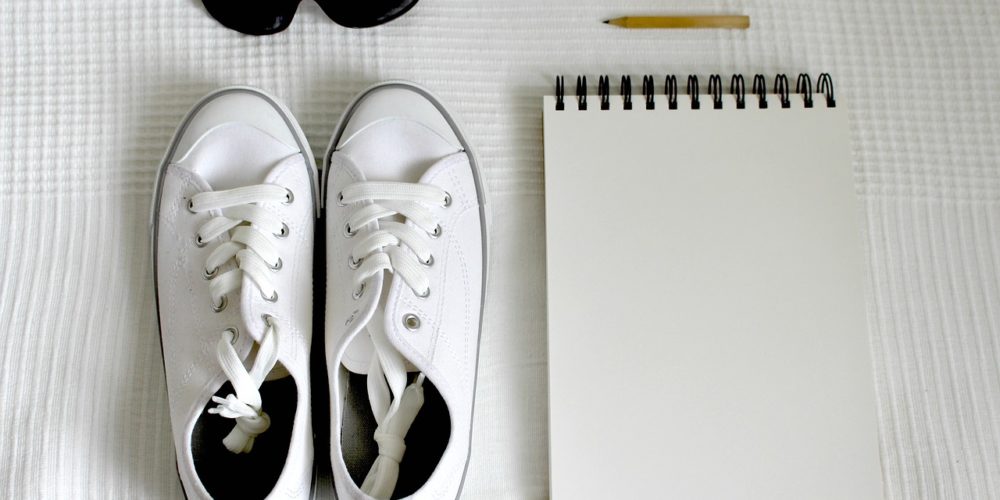The comfort revolution has already happened

Soon after landing my first job located in London’s financial district, I found myself being indoctrinated in the dress codes of the day. Shoes, in particular, were a bugbear of the ruling classes. A gentleman, it seemed, had to be shod by a traditional British shoemaker, one that crafted traditionally handmade leather shoes. Brands like Church’s, Barker, and Loake came recommended.
Being young, impressionable, and wishing to please, I complied. The shoes I bought were expensive and exquisitely made; but also utterly devoid of style or personality. That perhaps was the intention. We were being forced to look like one another.
There was a bigger problem, though. The shoes might have been well made, but they were damnably uncomfortable. They would compress and oppress the tootsies; their hard leather soles offered no spring to any step; and their weight felt like being cuffed at the ankle. I soon found myself rebelling, seeking out those who made shoes differently, with more style, and certainly with more comfort. My elders sniffed their disapproval; but I had already begun not to require their validation.
Last year I wrote here that the prolonged COVID lockdowns had made many more of us used to comfortable clothing, and that this might have permanent ramifications for corporate dress codes. In a recent visit to London, I stopped short while passing Church’s flagship store on Regent Street. What was the first item in the display window? White trainers! Proof indeed that the comfort revolution has scaled even the most sacred bastions of tradition.
I set out to conduct some informal observations on the ground. On the streets and town centres of the UK, what proportion of people still wear traditional footwear? I counted fewer than ten out of every 100 pedestrians on a weekday. On weekends, 95 per cent or more would be wearing sneakers and trainers and slides of some sort or other. Even the older folk seemed grateful for the lightness and softness of modern footwear.
Well, well.
Comfortable, flexible clothing is everywhere. Elasticated waists, stretchy cloth, materials that require less ironing. Even more orthodox footwear now uses technology to add padding above the sole and air cushioning inside it. Traditional menswear shops devote a good chunk of floor space to contemporary comfortable clothing. Wherever I looked, even in the most hallowed establishments, sweatpants, sneakers, puffers and hoodies had infiltrated.
Conservative authoritarians might go blue in the face at this news, but let me say to them: you won’t win this one. The wider populace has already bolted from your restrictive stables. You can still try to whip your people into wearing clothes that look like yours; but it ain’t gonna fly, dude. They moved on without you.
I migrated away from suits and ties and black leather shoes literally the minute I became self-employed. It was like being unchained. When I put on my first pair of lightweight high-tech trainers a few years ago, it was like walking on air. When I first encountered jeans with stretch in them, it was like the prison doors had opened. That freedom was available to me because I no longer had bosses, only clients; and those clients needed me for something other than my attire.
Now that freedom is becoming available to the ranks of the employed, too. Long may this revolution continue. Stop to think for a moment, and see that the idea that we should all conform to the rigid dress requirements of long-dead patriarchs and matriarchs is patently absurd. It is done ostensibly to impose order and decency on people; but the real intention is regimentation. Dress like me, think like me, behave like me. Generations later.
It’s time we allowed people the freedom to be themselves, not versions of us. Let them wear things that express their spirit, not the antiquated norms of their leaders. I keep hearing bosses and board members say: we want flexibility and agility; innovation and creativity; fresh thinking and new ideas; localization and relevance. Oh, and also, here is the company’s dress code document. Comply, or go home. We are watching. Cognitive dissonance, much?
There is still a perfectly valid place for traditionalists who love their orthodox attire. I love meeting people who still shoot their cuffs and tie great Windsor knots and polish their shoes and use fountain pens. They add to the colour and variety of the human race. To be a quirky maverick who resists trends and sticks to personal preferences is delightful. But equally, let others be themselves. Let people wear their kitenges and sarongs, kurtas and abayas, kaftans and ponchos—with panache and decorum. There are of course some situations and organizations where we all need to be uniformed and monotonous—but there are not many.
Indeed, the creative breakthroughs of the future may come from someone in your team dressed entirely unlike you. So don’t insist on being surrounded by the humdrum and the homogenous.
(Sunday Nation, 16 October 2022)

Buy Sunny Bindra's new book
The X in CX
here »
Popular Posts
- The pause that saves usJune 8, 2025
- Where are you rushing to—your funeral?June 29, 2025
- How to spot a real thinkerJune 15, 2025
- Built the app, forgot the flowJune 22, 2025
- The first push is the hardestJune 1, 2025















